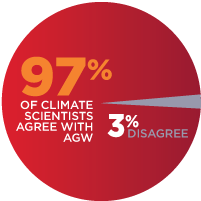Science uses models to explain aspects of the real world.
Good scientists need to be creative. They need to invent fertile new models and design imaginative ways of testing them.
 |
This is one of ScienceOrNot’s Hallmarks of science. See them all here. |
In short…
Scientists try to explain aspects of the real world by comparing them with models that are based on familiar mechanisms. Scientific models must be testable and they are accepted by scientists only after they have been tested in the real world.
The most common misunderstanding about science is that scientists seek and find truth. They don’t — they make and test models…. Making sense of anything means making models that can predict outcomes and accommodate observations. Truth is a model.
Neil Gershenfeld, American physicist, 2011
What is a scientific model?
Scientists build models to explain how aspects of the real world work. A scientific model consists of ideas and concepts, and includes some kind of mechanism. Many models are built and investigated using mathematics, and computers allow very complex mathematical models. Often, there are competing models for the same phenomenon.
(Scientific models are also known as theories, but I’ll avoid this term here, mainly because, in everyday language, the world ‘theory’ is often used to mean the same thing as ‘guess’ or ‘hypothesis’.)
Characteristics of scientific models
Good models are hard to come by. They can’t be built on the basis of whim or fantasy. Models must be grounded in solid, scientific principles. A model explains a phenomenon by showing how it arises as a result of simpler or more fundamental phenomena.
A good scientific model should include a mechanism. When scientists construct a model, they are hypothesising that some poorly understood aspect of the real world can be compared (at least in some respects) to a mechanism that is well-understood.
Every scientific model must be refutable or falsifiable – that is, there must be a way of testing whether it is false. For more, see Scientific models are falsifiable.
A scientific model must be able to generate predictions. It will be accepted by the scientific community only if its predictions stand up against data from the real world. For more, see Scientific models are tested against the real world.
New models are more likely to succeed if they dovetail with existing scientific models. In fact, successful models often reveal that phenomena that were previously thought to be isolated are really connected. See Science is a collective enterprise for more on this.
It’s important to remember that a model is not the same as the real thing; they are similar in some respects, but not in all. After lots of testing a model usually becomes more refined. It resembles less and less the original simple model, and looks more and more like the real thing.
Why models are needed
Models allow us to investigate complex things that we don’t understand well by using our knowledge of simpler things. Once a model finds supporting evidence and is accepted, it can be confidently used to make reliable predictions about the phenomenon it represents. Finding a model that fits a phenomenon is what we mean by “explaining” or “understanding” that phenomenon.
Once models are accepted, they allow scientists to communicate and understand each other because they provide a common, shared mental picture of a phenomenon.
And models are not the end products of scientific inquiry. They usually generate ideas for new models that can be tested, helping scientific knowledge to advance.
Examples
- The Plate Tectonic model of the Earth pictures the outer layer of our planet as broken into fragments called plates, which float on underlying plastic layers and slowly drift around. This model can explain the jigsaw fit of some continents, the origin of many earthquakes and volcanoes, and the global distribution of some living things – things that previously were not thought to be related.
- The biological evolutionary model explains how existing species arise from earlier species through the mechanism of natural selection.
- Global climate is the result of a complex interplay of fundamental physical factors. Climate scientists try to build mathematical models taking those factors into account. Different models have differing success in explaining climate variations. The most successful models are those that incorporate the effect of human-produced greenhouse gases.
- Update 2014/01/09: Until recently, climate models had difficulty accounting for the effects of clouds. A new study reveals that the models need to allow for updrafts that rise to differing heights in the atmosphere, thus influencing whether clouds form. This refinement to climate models shows that the earth is even more sensitive to carbon dioxide concentrations than was previously thought. Details here.
- Here’s a visual rendering of a model from NASA showing The Thermohaline Circulation (The Great Ocean Conveyor Belt)
- No single model can explain everything about light. Some behaviour of light is best explained by a wave model, other behaviour by a particle model. Light consists of neither waves nor particles – these are simply models used to represent light. Scientists need to learn which model is appropriate in different circumstances.
- There are competing models for the causes of the extinction of the dinosaurs.
- Astrology attempts to account for human characteristics and predict events by using a model based on the positions of constellations and planets. This model offers no mechanism to explain the connection and cannot claim to be scientific.
- Homeopathy is based on a model which proposes that an ailment can be treated using highly-diluted solutions of substances that cause symptoms similar to those of the ailment. This model is not scientific because it has no mechanism that fits with the rest of scientific knowledge.
Further reading
Three Science Words We Should Stop Using by physicist Rhett Allain at Dot Physics gives a well-reasoned argument for replacing the terms hypothesis, theory and law with the single term model in science.
Neil Gershenfeld’s quote is from The World Question Center 2011.
The Sunspot model graphic from Original graphics is by Dr. David H. Hathaway, animation by Michael Ronayne. [Public domain], via Wikimedia Commons
| This is one of ScienceOrNot’s Hallmarks of science. See them all here. |
Updated 2013/08/05











It helps explain models but the language used was a little too complex for me.
I enjoyed the reading and learned about the three science words we should not use when describing the word model.
i didn’t realize that a theory in science was not just a guess.
A lot of people continue to have the same misunderstanding, Hannah. Here’s hoping they will also discover what the word “theory” means to scientists.
This website was very helpful with my assignment and it helped me to understand what a model is and what it is used for. Thank you!
It’s good to know it’s been helpful Cathy. Thanks for the feedback.
I’m using this to help me with my classwork, It’s very helpful!
Thanks for letting me know, Savannah. I’m happy to hear it helped.
They still don’t have a working climate model. The process must be repeatable for the model to be accepted.
It’s difficult for me to see where you are coming from, Mike. There are quite a lot of working climate models. Who are the “they” you are referring to in your first sentence? What “process” are you referring to in your second sentence?